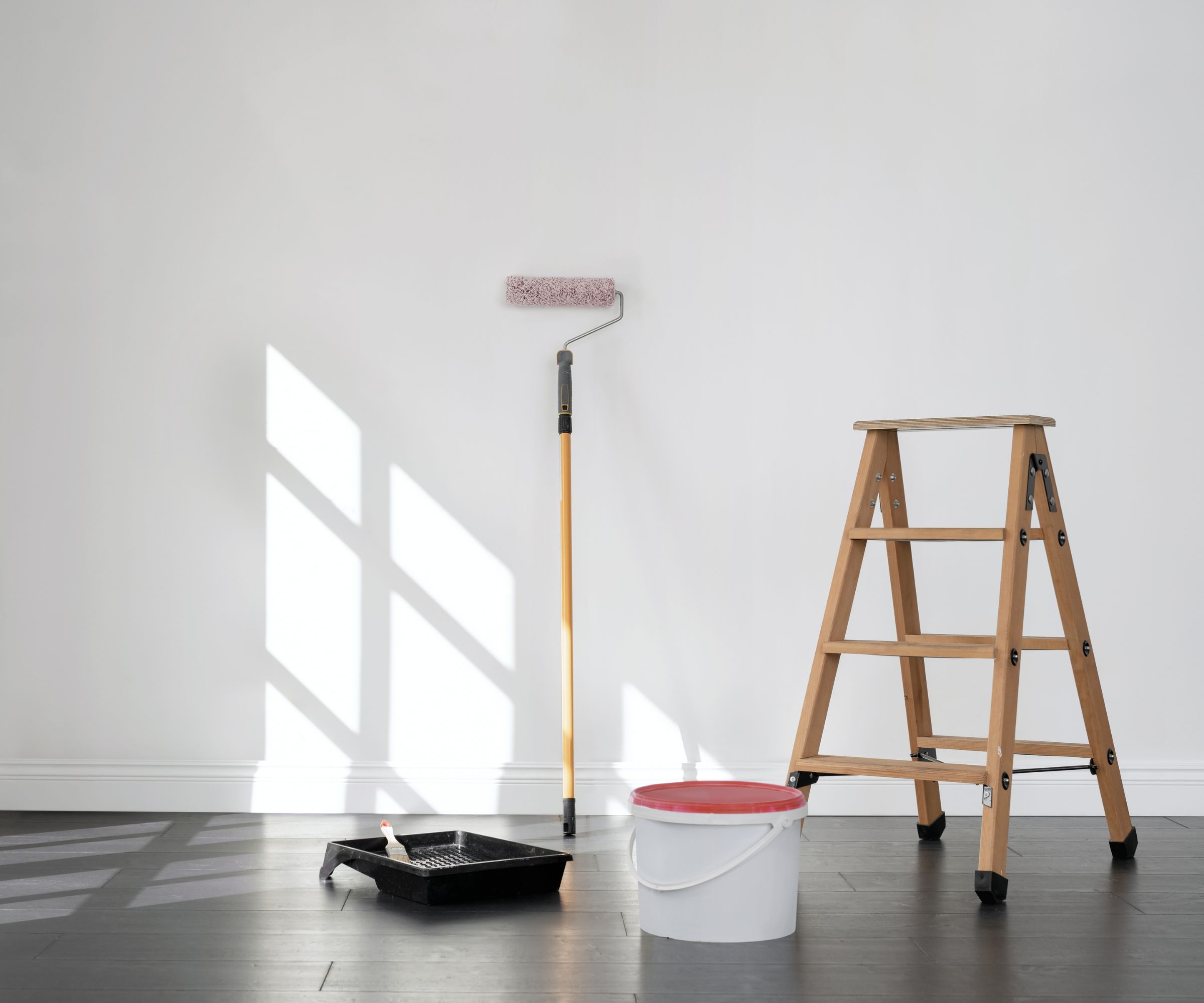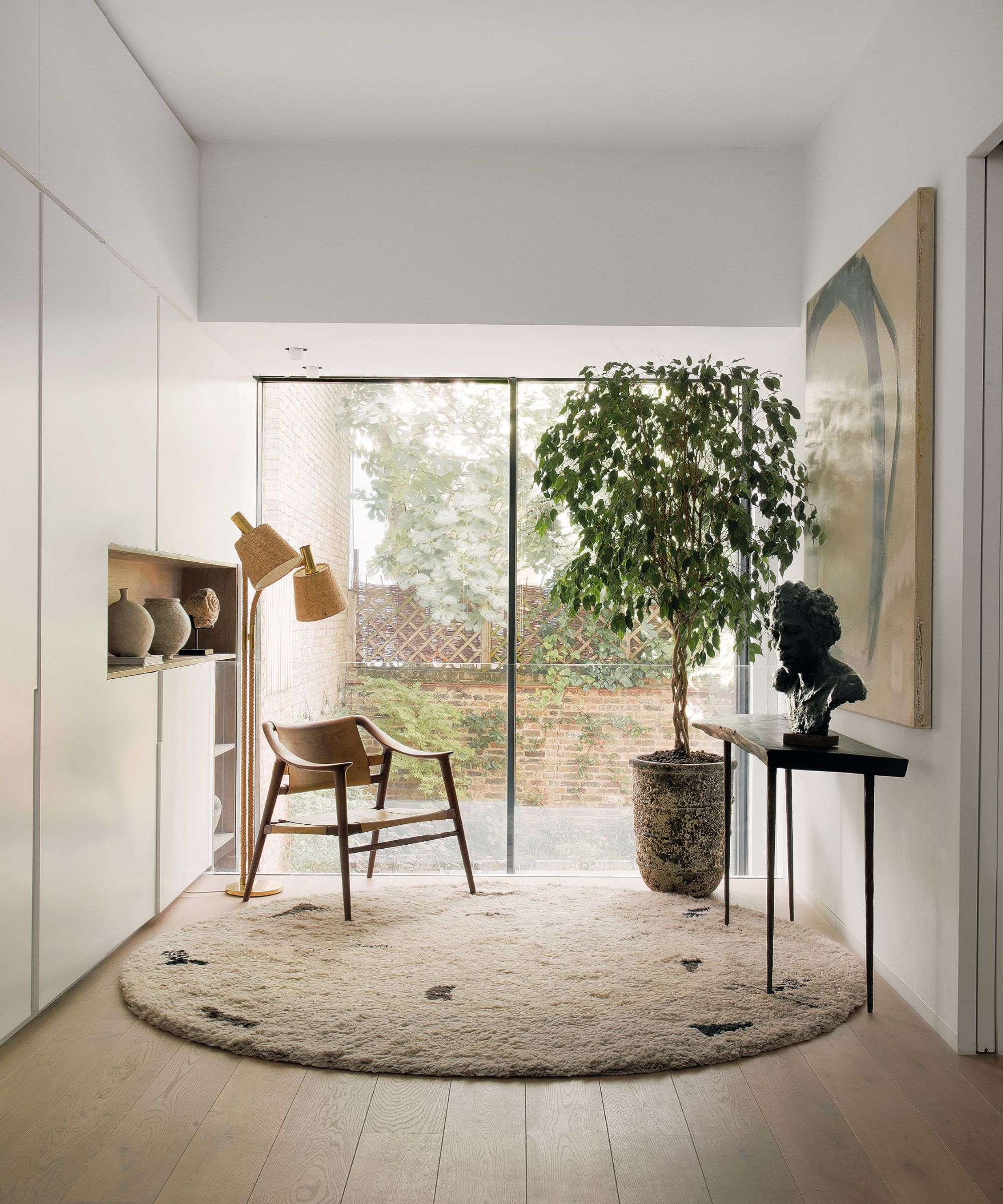The 11 most common decorating mistakes every homeowner makes – and how to avoid them
These big home decorating mistakes happen in every renovation – here's how to avoid them

Jennifer Ebert

- 1. Foregoing planning permission
- 2. Not using your budget
- 3. Not listening to expert advice
- 4. Trying to DIY too much
- 5. Aesthetics over practicality
- 6. Decorating over issues
- 7. Skipping steps
- 8. Not talking to your contractors
- 8. Leaving lighting
- 10. Buying before measuring
- 11. Not future proofing your home
- FAQs
Redecorating or renovating a home is an exciting endeavor, but, amidst the enthusiasm, it is easy to make decorating mistakes while wading through juggling contractors, home design plans, and budgets.
From neglecting prep work to overcrowded layouts and forgetting planning permission, simple mistakes can add up and detract from the harmony and functionality of your new home.
These 11 decorating mistakes happen in almost every home renovation – this is how the experts avoid them.
The most common decorating mistakes
Decorating mistakes can range from small but fixable paint blunders to expensive home renovation mistakes that are tricky to correct when everything else is in place.
The easiest way to avoid all of these is to plan everything from the budget to the timeline and negotiate these with your contractors and suppliers. Putting together a pre-renovation checklist will help to avoid the biggest mistakes and could even help you save money on renovations.

1. Foregoing planning permission
While there are several home improvements you can make with planning permission, many large-scale renovations and changes to the exterior of your home often need explicit permission before work begins, warns Shlomo Cherniak, professional handyman and owner of Cherniak Home Services.
'One of the most damaging mistakes individuals make is neglecting to obtain planning permissions. This oversight can lead to legal ramifications, delays, and costly alterations,' he warns. In most cases, it is far less hassle to enquire about planning permissions and whether or not they are needed for your renovation than to deal with the aftermath.
Design expertise in your inbox – from inspiring decorating ideas and beautiful celebrity homes to practical gardening advice and shopping round-ups.
In some cases, failure to retrieve planning permission could result in an order to undo all renovations carried out on your property – an outcome no one wants to deal with.
2. Not using your budget
Understanding how much you should budget for home renovations is one of the biggest parts of a home update. Not sticking to your budget, or trying too hard to cut costs can all result in headaches and decorating mistakes down the line, warns Artem Kropovinsky, interior designer and Founder of Arsight:
'The lack of a defined budget usually results in either over-expenditure or incomplete projects,' he explains. 'A properly prepared budget is critical for balancing design and physical elements. It should also factor in a buffer cost, giving you some wriggle room if you come up against unexpected repairs or labor costs during renovations,' he adds.
The saying, 'buy cheap, but twice' also rings true here. Parting with our hard-earned money is so often emotional rather than logical; we get seduced by low prices, online deals, and passing trends. If you can't wait for that prized piece of furniture, be sure to check second-hand stores for some unique pieces – these stores can hold some spectacular bargains on high-quality vintage furniture and accessories.
3. Not listening to expert advice
The experts are experts for a reason – they often know best. While it can sometimes be difficult to fully trust a contractor who you are paying to complete a job, finding a trustworthy company (preferably through word of mouth, or at least with great reviews) should help to mitigate any fears that they are trying to get you to pay more than you need to for your dream home.
Neglecting to listen to the experts can also lead to costly decorating mistakes such as whole house layout mistakes, fixtures or furnishings that will need constant upkeep or frequent repairs, or worse, structural issues that could have been avoided for less if you had dealt with them while carrying out the initial renovations, warns Gabriella Dyson, Head of Solved for Homes & Gardens.
Homeowner's Renovation Tips & Log Book: From Planning to Completion | $15.99 at Amazon
Being fully informed about the best way to approach a renovation step-by-step is key to a successful renovation.
4. Trying to DIY too much

Optimism is a wonderful thing, especially when it works out, and there are plenty of DIY projects that will elevate your home. That being said, some tasks are best left for the professionals, especially if you have a track record of leaving tasks unfinished.
'While do-it-yourself enthusiasm is good, ignoring professional help might lead to mistakes that cost a lot. Professionals add a wealth of expertise in planning, design, and implementation,' assures Artem Kropovinsky, interior designer.
Unless you are a trained bricklayer, plumber, plasterer, or electrician, for instance, these tasks are often best left to a professional, while you get on with painting furniture to give it a new life, or painting a room.
5. Opting for aesthetics over practicality
When we are excited about a new home decorating project, it is very easy to fall into the trap of creating a mood board filled with pretty paint colors, fabrics, and furnishings, but neglecting to think about how we want that space to work for us, says Nicola Fontanella, Founder and Creative Director at Argent Design. In some cases, it can result in the homeowner avoiding using the space entirely, she warns.
The easiest way to avoid this decorating mistake is to consider how you want the room to work for you before you start to look at inspirational pictures. That way, when making a mood board, you will be more likely to be drawn to images and materials that work with your vision, rather than trying to force something you like on Pinterest to work for you.
6. Decorating over issues, rather than fixing them

One of the biggest home decorating sins is decorating over an issue to conceal it, rather than dealing with it and having it repaired. It might save you money now, but it will likely come back to haunt you and your wallet.
As much as we like to ignore a problem with the hope it will just disappear, chances are this is never the case. If your space is suffering problems, be it dampness, mold, cracks, or worse, it is always recommended to address these issues first before the decorating begins. You'll be glad you did.
Learn the dry wall mistakes to avoid.
7. Skipping steps to save time

Home renovations are long, drawn-out processes, but skipping out on steps just to make them go quicker is a terrible decorating mistake. One of the most common cut corners is neglecting to prime before painting, for instance. While your paint will stick, it will not look its best, wasting your time and money.
Beautiful wallpaper and high-quality paint deserve to be layered on a smooth, primed surface. Primer is always a good idea, but you will need to follow the directions on the wallpaper roll or paint tin, as it varies.
8. Not talking to your contractors
More often than not, your contractors will be the make or break of your project, so it is vital that you communicate with them to set out your expectations, work out what they need for you, and ensure that your plans are clear, says Quinn Babcock, construction and design operations lead at Block Renovation:
'Start by making sure you have a clear, written contract that outlines the scope of the project, the schedule, and the payment terms. This will help ensure that everyone is on the same page from the start and avoid any misunderstandings,' he begins.
'Then, continue to communicate openly and regularly with your contractor. Make sure they have all the information they need to do their job and check in with them regularly to see how the project is progressing. If there are any changes to the schedule or the scope of the work, make sure you discuss them with the contractor and come to a mutually agreeable resolution.
'Finally, be flexible and willing to make adjustments as needed,' Quinn suggests. 'Renovations can be complex and unpredictable, so it's important to be open to changes and willing to work with your contractor to find solutions to any obstacles that might come up.
'At the end of the day, the contractor is your partner, not some adversary— they want to do a good job, get things done quickly, and do work everyone is happy with. Things might change along the way, but working together through those changes will make things go a lot smoother.'
9. Leaving lighting to an afterthought

Another small but common decorating mistake that adds up around your home is neglecting good lighting ideas, shares designer Nicola Fontanella. You should never underestimate the effect good lighting has on the way your space looks, feels, and functions.
'Underestimating the importance of proper lighting layouts and color temperatures can significantly impact the ambiance of a room. Before kicking interiors off, it’s recommended to plan out the location, type, and hue of all lighting and any additional decorative lighting being added to a room. You want to avoid overdoing/underdoing it.'
10. Buying before measuring
Is there anything more frustrating than buying a new piece of furniture, getting it home, and realizing it doesn't get through the door? Or discovering it takes up way too much space and you can't move around?
This simple decorating mistake can be easily avoided by measuring at least twice before you go shopping – especially when buying something as important as your new kitchen or bathrooms, says Gabriella Dyson, Head of Solved.
11. Not future proofing your home

It can be easy when decorating and renovating to think solely about our current needs, and not those of our future selves. When decorating a space that we plan to live in for several years to come, it is important to think about design elements that will complement multi-generational living, future-proofing your home both for the possibility of children and older age, suggests interior designer Nina Lichtenstein, founder of Custom Home Design.
Swerving this common design mistake ensures accessibility, safety, and comfort for everyone at any time.
FAQs
Is there such a thing as over decorating?
Just as it is possible to leave a space too bare, it is possible to over-decorate a home too. Having a room that is too full of furniture, for instance, will disrupt the layout and make it difficult to move around. Using too many colors or contrasting decor elements will make the room too busy for the eye and increase stress.
What are the five stages of decorating a house?
When redecorating or renovating a house, you typically work through five stages:
- Budgeting and finance
- Planning permissions (when needed)
- Designers and contractors
- Scheduling work and work begins
- Inspecting and quality checks.
Following these five steps will ensure the smoothest possible workflow for everyone involved, no matter if you are hiring someone to come and paint a room, or are having a whole extension added to your property.
Educating yourself on these common decorating mistakes before you start updating your property is the best way to avoid them, or at least iron them out if they crop up during the process.

Chiana has been at Homes & Gardens for two years and is our resident 'queen' of non-toxic living. She spends most of her time producing content for the Solved section of the website, helping readers get the most out of their homes through clever decluttering, cleaning, and tidying tips. She was named one of Fixr's top home improvement journalists in 2024.
- Jennifer EbertEditor
